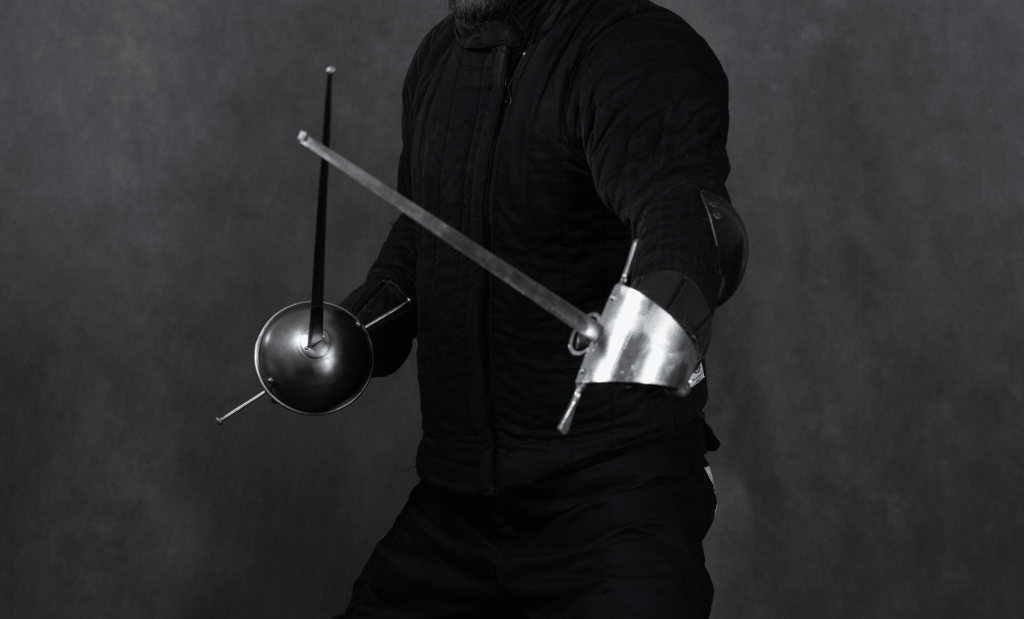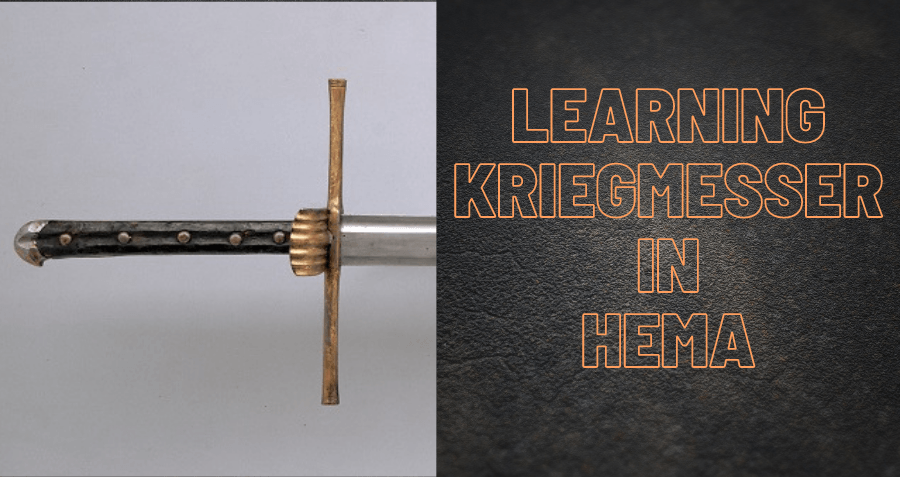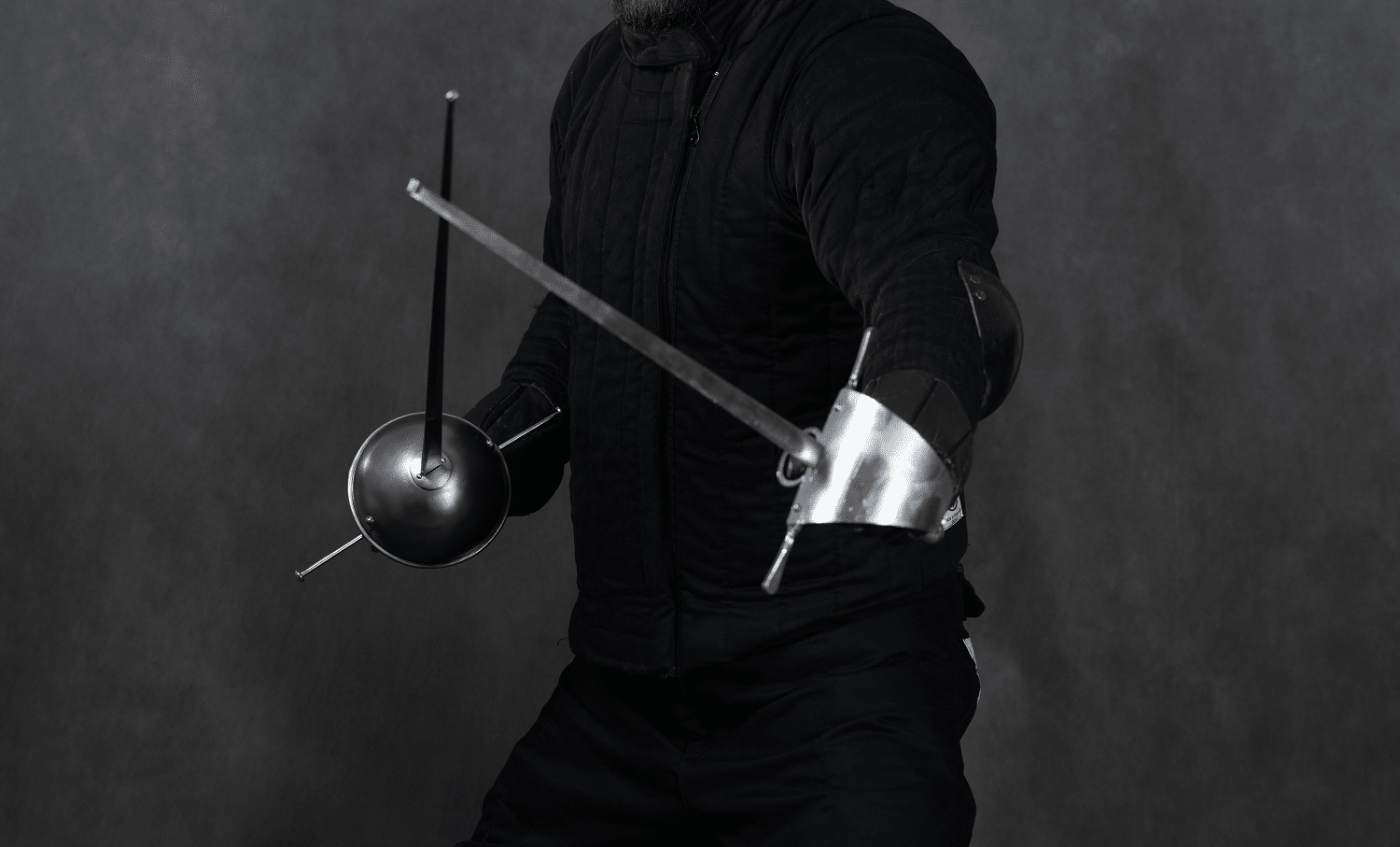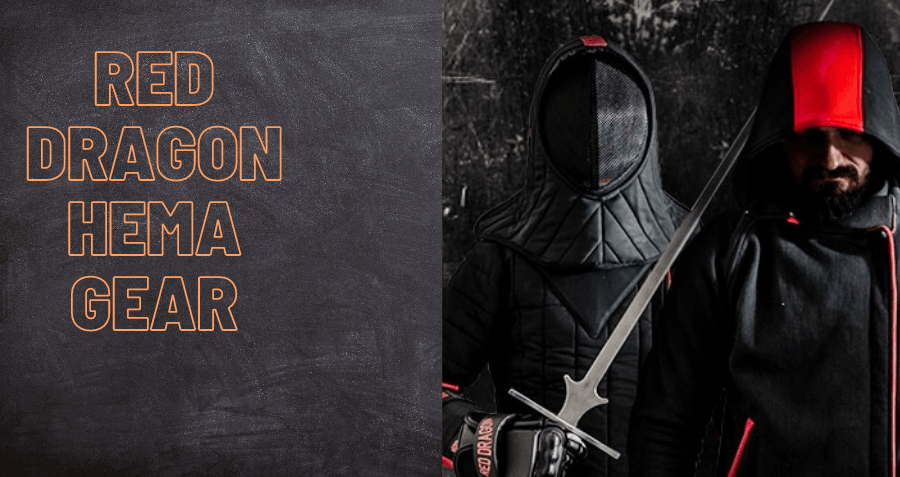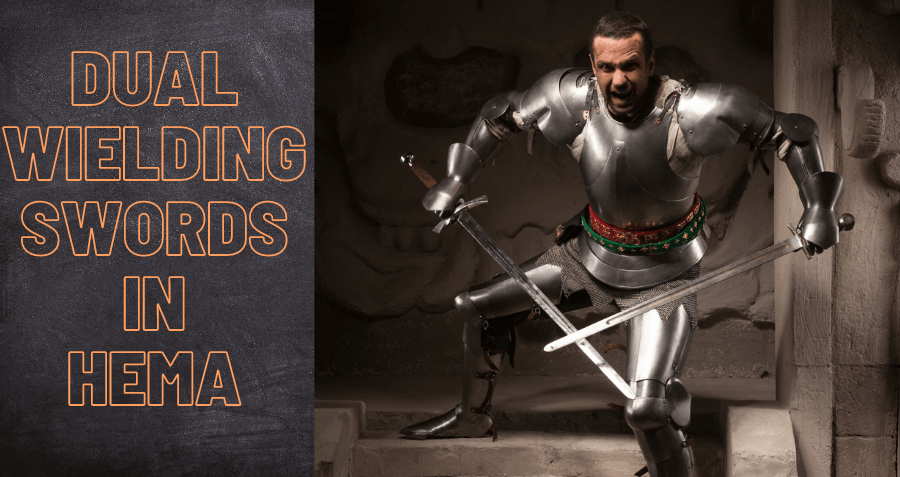Parry daggers are a companion weapon used within certain sword fighting styles and traditions, such as in side sword and rapier fencing. Unlike contemporary modern Olympic style fencing, HEMA (Historical European martial arts) fencing does incorporate the usage of a parry dagger, which are also popularly known by the names main gauche and sword breaker. You can watch a video belong that provides some excellent information about the usage of parry daggers / main gauche / sword breakers in Italian rapier fencing styles.
You can learn more about the usage of parry daggers such as main gauche and sword breakers in our Path of the Rapier section that describes historical usage of rapier with companion weapons.
Main Gauche, Sword Breakers and Parry Daggers in History
A dagger is like a knife and has a razor-sharp point, two sharpened edges and can be used as a killing weapon. Daggers are used for fighting in close-proximity, self-defense, or combat. Daggers have been used for close combat clashes since ancient times, and many cultures also use embellished daggers in various rituals and ceremonies, too. The unique shape of a dagger has made it a symbol, often associated with assassination and murder.
Daggers have been available as early as Neolithic times. Copper daggers appeared in the early Bronze era, and in the 3rd millennium B.C., copper was used as weapons, instruments of torture, and utensils.
The definition of daggers has often included knives with only a point, such as the ice pick-like European rondel dagger used by knights in the early medieval period or a stiletto used in the Renaissance. However in most contexts of the word usage, a dagger needs to have certain characteristics. It needs to be a short blade with a sharply taped point, a fuller, and two cutting edges sharpened along the blade’s full length. Daggers also feature a crossguard to keep hands from hitting the sharp blade edges. This generally differentiates them from a knife, that usually has no crossguard.
One of the earliest daggers made of iron was found in a Hattic tomb dated about 2500 BCE, and it had an iron blade and a gold handle. Daggers have also been excavated from ancient Indian ruins, ruins in China along the Wall, and in Egyptian tombs.
During ancient times of war fighters believed that they needed short stabbing weapons to carry on their person. They wanted a stabbing weapon they could carry around and one that was convenient to use. Originally, daggers came from bone, wood, and animals’ untreated horns. During the Bronze and Copper Ages, daggers were made of pliable metals to be used as backup weapons to axes, spears, and maces.
Daggers were often chosen to be used in situations where it is impractical to use a sword, spear, or a club. As defensive and stealth weapons, daggers have appeared in every ancient civilization for war, ceremonies, and tools.
During the Middle Ages. Daggers became mainly defensive weapons. They were used as backup weapons and often were part of a warriors armor taking the place of armor. Daggers quickly became popular since they required less iron to forge than swords and were short and deadly when carried. In Asia, daggers were used as civilian weapons, but combat daggers are used as an auxiliary weapon designed for special tasks in modern warfare.
In modern times daggers are still used as weapons, and illegal to carry concealed in many places. Daggers are often legislated to restrict their manufacture, possession, transport, use, and sale in the hopes of reducing crime rates although this has varying degrees of success given criminals are individuals who by virtue of their career ignore the laws. Still it is often believed legislation to restrict the carry of long bladed knives has reduced violent crime in many countries.
Parry Dagger Usage in History
A parrying dagger is considered a small handled weapon that is often used in place of a shield as a companion weapon. This dagger is used as a defensive weapon to ward off strokes, thrusts, and longer swords. The parrying dagger originated in the late Middle and early Renaissance of Europe. These daggers were used as off-handed (or left-handed) weapons and a single-handed sword or rapier. Parry daggers were designed to defend in a bloodthirsty fight where the defender, and the opponent, use blades in each hand. Parrying daggers have a wider guard and other defensive features to protect the user’s hand than do swords. They can also be used for attack if the opportunity demands.
The parry dagger appeared in the early to middle of the 6th century and was first called the left-hand dagger. It contained stout quillions or cross pieces. Quillons are, as with swords, a part of the dagger to protect the hand of the user. Quillons on parry daggers sometime contain a bar of metal at right angles to the blade and are placed between the blade and the hilt, and this provides additional protection to the hand.
In ancient to medieval times, a long dagger and short sword were often used the same way. In the 1300s, the European dagger was finally designed to look different from the sword and a fencing styles of sword fighting encouraged usage of a dagger with a large guard in the 16th century.
Daggers with wavy blades, straight blades, and those with perforated edges or small holes were also made to help make the weapon lighter or aid the defender. However, fancy forms of daggers disappeared in the early 17th century in favor of the main-gauche or left-hand dagger. The sword breaker and triple dagger are late developments and appeared around the 1600s. Parrying daggers were often made as decorative additions to the sword, matching the hilting styles of the longer weapon and sold as a set.
Categories of parrying daggers include the sword breaker, main-gauche, and the trident dagger.
Main-gauche style of parry dagger
The main gauche (French for ‘left hand’) is a dagger specifically designed to be used as a companion weapon, typically used in the off-hand with a sword in the dominant hand. This style of parry dagger is used to help in defense by parrying or turning enemy thrusts away from the fighter’s body and allowing a counter-attack with the dominant hand holding the sword. The main gauche was a long and heavy dagger that measured a bit more than 19 inches. It had long, straight quillons or an arm at the crossguard of a sword.
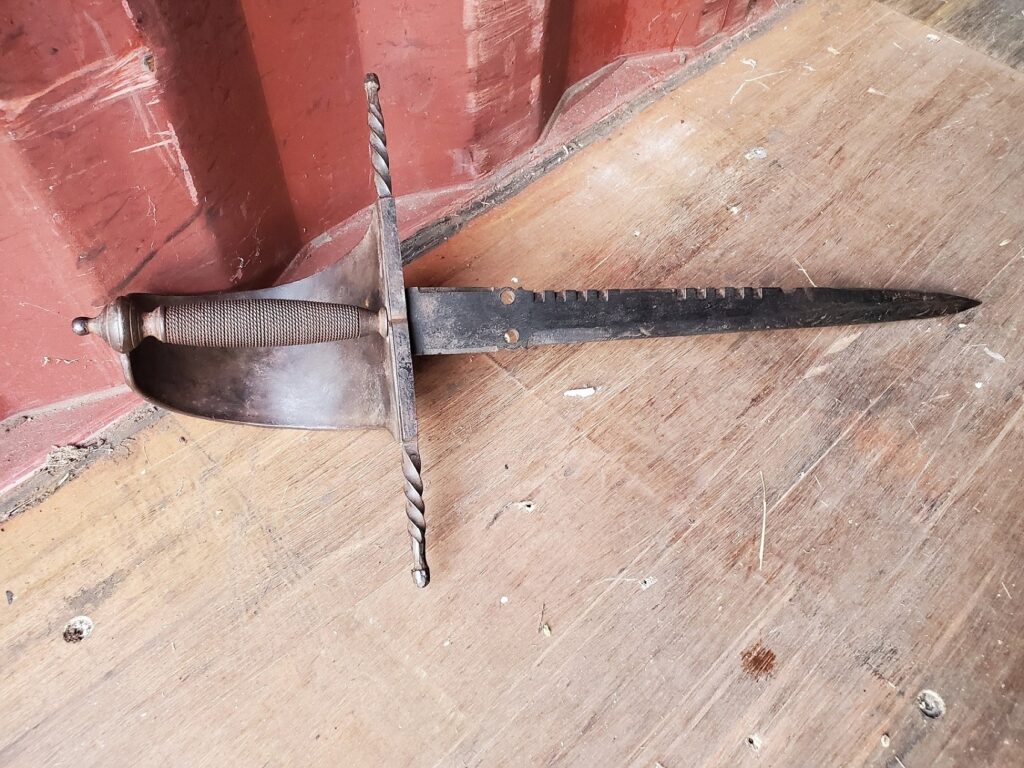
The blade of the main gauche dagger was produced in three sections. The first portion of the blade was near the hilt and contained the portion that is not sharpened, which is flat-sided and a bit beveled at the edges, to assist with gripping the opponent’s blade. A main gauche parry dagger may have one or two small holes at the forward end. There may also be an elliptical imprint for the thumb, too.
The next part of the blade is single-edged and has a flat wedge-shaped cross-section. The edge is near the user’s left hand when ready to thrust. Some main gauche parry daggers have grooves or notches on the back of the blade.
The third and longest section of the main gauche parry dagger blade comes to a point and is usually double-edged with a diamond pattern cross-section. There may be notches for short space along the edge. You can also find a main gauche parrying dagger with a blade with cured quillions, rounded guards, or blades with only two sections.
Sword breaker style parry dagger
The swordbreaker is a parry dagger with large serrations along one side of the blade. These serrations resembled the barbed teeth of a comb and were used to entrap an opponent’s sword blade. Some historians have claimed that a swordbreaker broke sword blades in fights. However, during this period, swords were manufactured to stand up to forces much stronger than the thrust and parry of an opponent’s left hand. So the idea of a swordbreaker parry dagger actually breaking swords seems unlikely as sword blades are incredibly flexible and strong, but these swordbreaker parry daggers do hold swords tightly to lock an opponent’s weapon in during hand to hand combat, making it easier to attack with the main hand weapon. The swordbreaker is considered a rarer type of parry dagger because it was difficult to efficiently craft such a weapon.
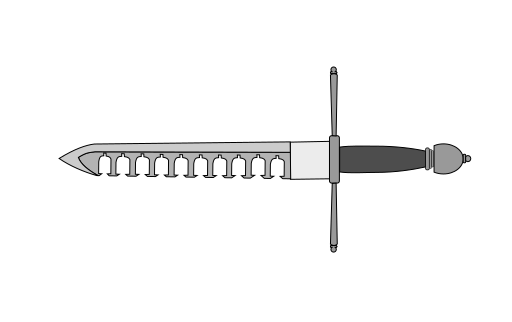
Artistic design of a sword breaker (source)
Trident Style Tripple Parry Dagger
The third type of dagger is a trident dagger or triple dagger. These daggers have blades that are divided lengthwise into three parts or blades. The blades fold together to form one blade, and when a mechanism at the hilt is pressed, the two side blades pop open under spring pressure and form a trident. This design is a parry dagger also capable of trapping an opponent’s blade. A trident dagger is a rarer form of a parrying dagger due to its mechanical nature, likely only used primarily by the very wealthiest of swords fighters.
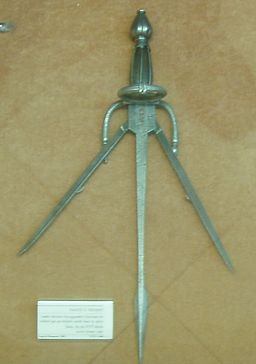
Trident dagger, 16th century, made in Germany. Picture taken at the Château d’Écouen, France. (source)
In Summary about Parry Daggers
History shows that daggers are the earliest versions of knives. Daggers originally were multi-purpose and used for hunting, culinary purposes, and fighting. Today you find daggers used for weapons, as collector’s items, or in knife shops, and specialized parry daggers are still used in Historical European martial arts (HEMA) schools as people train with and study side-swords, rapiers and other weapons that use parry daggers as companion weapons.
You will find most of the historical treatises that describe the usage of parry daggers in sword fighting at our Path of the Rapier section of this website.
****
If you’d like to learn more information about historical fencing practices please check out our Learn HEMA page for a guide to learning about the historical weapon that interests you. You can also find more guides we’ve written about other topics at our Helpful Guides page. You can also join our community at our forums.
